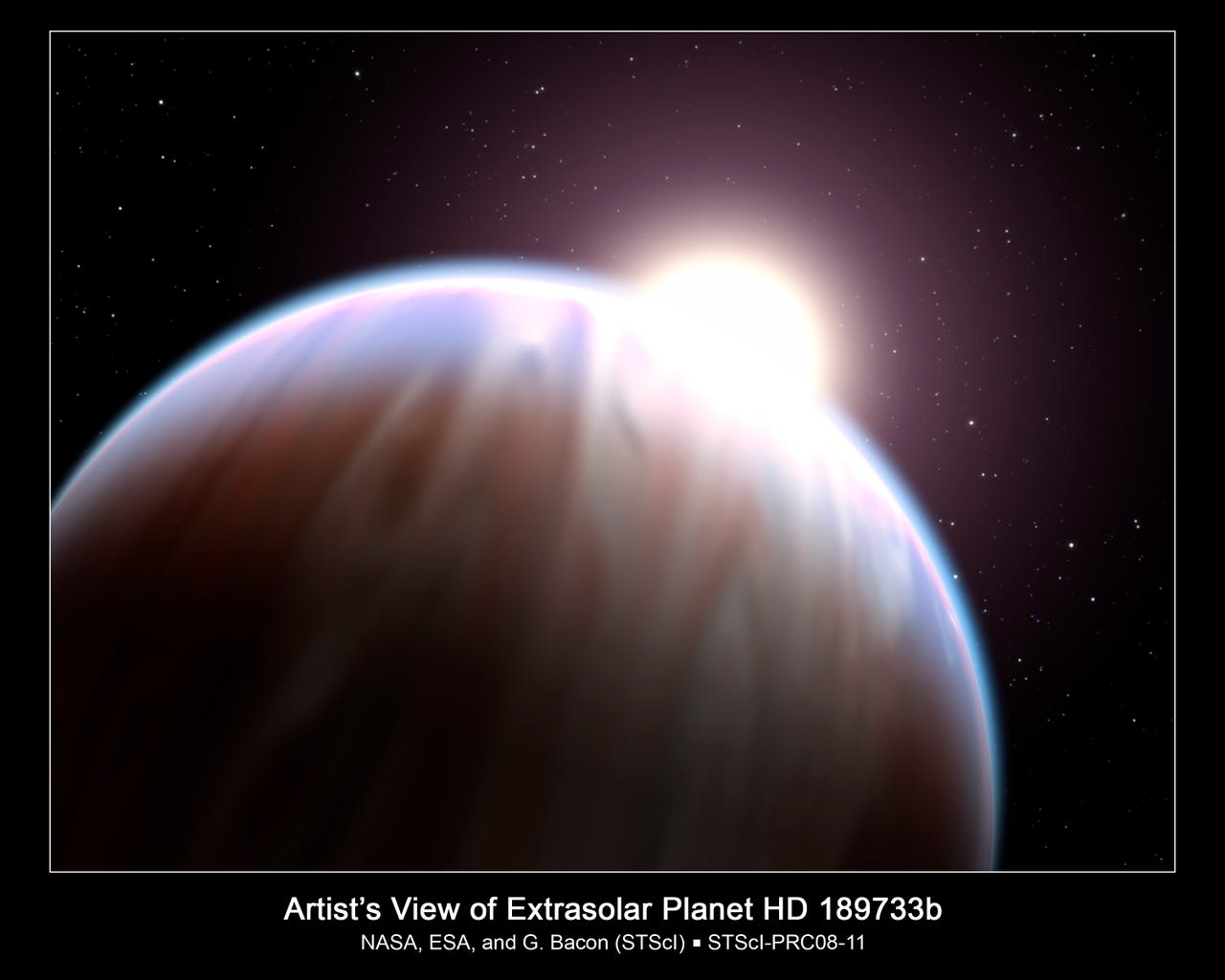Image: First extra-solar organic molecule discovered
The Hubble Space Telescope has discovered methane in the atmosphere of a planet that's orbiting another star.


1 of 1 Andy Smith/ZDNET
The Hubble Space Telescope has discovered the first organic molecule on a planet orbiting a star that's not in our solar system. According to NASA this breakthrough could be a major step toward discovering life on other planets. Scientists believe that the organic compound detected, methane, can be an integral part in the chemical reactions considered necessary to form life as we know it.
The discovery was made on a planet called HD 189733b, which is 63 light-years away from Earth in the constellation Vulpecula. Hubble also confirmed the existence of water molecules in the planet's atmosphere--a discovery made by NASA's Spitzer Space Telescope in 2007.
The planet is called a "hot Jupiter" because it is about the size of the giant planet in our solar system but is closer to its sun than planet Mercury is to ours. It takes the planet just two days to orbit its sun. Its temperature is about 1,700 degrees Fahrenheit, considered to be too hot for life as we know it. But this discovery means that methane and other compounds can probably be identified on other, more Earth-like, planets somewhere in the galaxy.
Related Galleries
Holiday wallpaper for your phone: Christmas, Hanukkah, New Year's, and winter scenes
![Holiday lights in Central Park background]()
Related Galleries
Holiday wallpaper for your phone: Christmas, Hanukkah, New Year's, and winter scenes
21 Photos
Winter backgrounds for your next virtual meeting
![Wooden lodge in pine forest with heavy snow reflection on Lake O'hara at Yoho national park]()
Related Galleries
Winter backgrounds for your next virtual meeting
21 Photos
Holiday backgrounds for Zoom: Christmas cheer, New Year's Eve, Hanukkah and winter scenes
![3D Rendering Christmas interior]()
Related Galleries
Holiday backgrounds for Zoom: Christmas cheer, New Year's Eve, Hanukkah and winter scenes
21 Photos
Hyundai Ioniq 5 and Kia EV6: Electric vehicle extravaganza
![img-8825]()
Related Galleries
Hyundai Ioniq 5 and Kia EV6: Electric vehicle extravaganza
26 Photos
A weekend with Google's Chrome OS Flex
![img-9792-2]()
Related Galleries
A weekend with Google's Chrome OS Flex
22 Photos
Cybersecurity flaws, customer experiences, smartphone losses, and more: ZDNet's research roundup
![shutterstock-1024665187.jpg]()
Related Galleries
Cybersecurity flaws, customer experiences, smartphone losses, and more: ZDNet's research roundup
8 Photos
Inside a fake $20 '16TB external M.2 SSD'
![Full of promises!]()